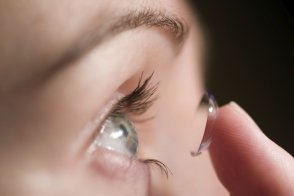Posted by: Caster Eye Center in eye health

Serious infection is always something eye doctors worry about a great deal. Infections can cause scarring of the cornea with a partial loss of vision, possibly requiring an operation to return the vision to normal.
A recent study reviewed the scientific literature to compare the serious infection rates for people wearing contact lenses to people who have the LASIK procedure. The study reviewed only major published studies with large numbers for the data analysis. The studies span a 20 year time frame. The resutls are rather startling:
The cumulative risk of a serious infection increases the more years that you wear contact lenses. Daily soft contact lens users experienced a 3 times greater risk of serious infection than people who had LASIK over a 5 year period. The risk of serious infection from daily soft contacts increased to 6 times higher than LASIK treatment after 10 years of wearing contacts.
For extended wear contact lens users, the risks of serious infection are much, much higher. People who sleep in their contact lenses experienced a whopping 17 times greater risk of serious infection compared to LASIK patients over a 5 year period, which increased to a 34 times greater risk of infection compared to LASIK over a 10 year period.
Gas-permeble contact lens users had no difference in serious infection risk over a 5 year period compared to LASIK, but at 10 years the gas-permeable contact lens users had 2 times the risk of serious infection compared to LASIK.
Clearly, contact lenses of all types pose a greater risk of serious infection in the eyes than having LASIK. This risk is higher for soft contacts than gas-permeable contact lenses, and is much higher for extended wear contacts. Even though the FDA has approved some soft contact lenses for sleeping in, many eye doctors do not feel that this is a good idea due to the greatly increased risk of serious infection. LASIK has a much lower risk of serious infection than contact lenses, and this risk difference increases each and every year that a person continues to wear contact lenses.
